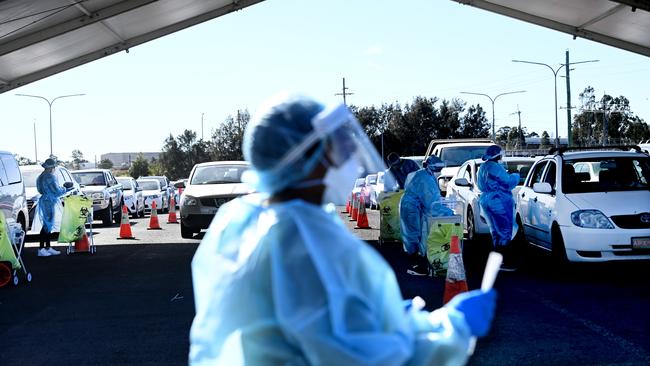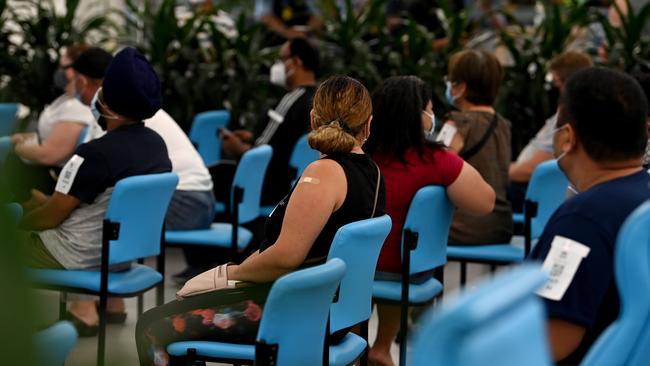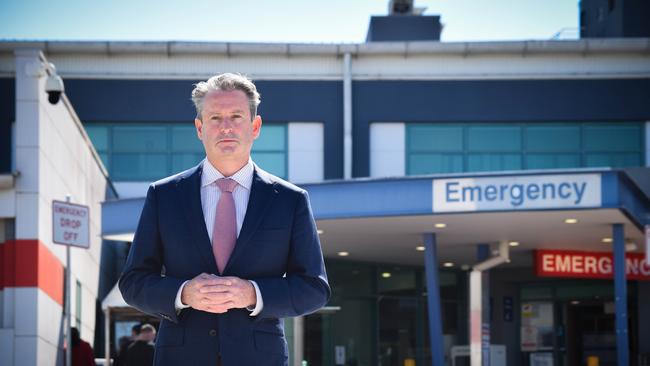Extent of Omicron outbreak at Campbelltown Hospital revealed with Bureau of Health Information data
On Christmas Day, Campbelltown recorded just 96 new cases of Covid-19. Fast forward 12 days and there were 1163 new cases. See how the Omicron wave impacted Campbelltown Hospital.
Macarthur
Don't miss out on the headlines from Macarthur. Followed categories will be added to My News.
The true impact of the tidal wave that was the Omicron Covid strain had on Campbelltown Hospital has been revealed with new figures revealing the increase of time spent by patients in the emergency department.
Data from the Southwestern Sydney Primary Health Network shows the rapid increase of Covid cases in the Campbelltown local government area as the Omicron strain swept through the state.
On December 25, 2021 the LGA recorded 96 new cases. Just six days later, the area record 624 new cases on December 31. By January 6, the daily count was recorded at 1163 Covid cases which jumped again on January 10 to 1352 new cases.
While the rate of new cases had slowed by February, there was a smaller spike again in March of this year.
A spokeswoman for South Western Sydney Local Health District said that January to March 2022 was a very challenging period for Campbelltown Hospital, as it responded to the peak of the Omicron Covid-19 outbreak.

“With infection rates peaking in the thousands each day, the hospital was caring for high numbers of Covid-19 patients, while also dealing with the challenge of having many furloughed staff,” she said.
The latest Bureau of Health Information quarterly report revealed 55.7 per cent of patients spent more than four hours in the emergency department in the three-month period beginning January this year.
The figure is up from 47.8 per cent, recorded for the same period last year.
To note, the four-hour state benchmark for time from arrival to leaving the emergency department used in the quarterly Bureau of Health Information report measures total treatment time, rather than waiting time.
In some cases, the BHI data reveals, some patients were in the ED for more than 13 hours, three hours more than the average at similar hospitals.
The spokeswoman said Campbelltown Hospital staff worked exceptionally hard to ensure high-quality and safe care was continually provided despite unprecedented activity levels in hospitals.

“We are exceptionally grateful for their dedication,” she said.
BHI chief executive Diane Watson said patients generally had longer waits for emergency department and ambulance services across NSW during the quarter, which was marked by high Omicron COVID-19 case numbers and changes to the state’s management of the pandemic.
“January to March saw the suspension and subsequent resumption of some non-urgent elective surgery and the relaxing of public health restrictions,” said Dr Watson.
“As the health system adapted, it continued to experience fluctuations in hospital and ambulance activity and performance.”
Campbelltown MP Greg Warren commended the tireless dedication of health staff throughout the pandemic, and particularly the Omicron wave.
But he said he was still concerned about staffing and resource issues at the hospital.
“The reality is, yes we have had significant challenges including Omicron, but some of these issues existed before all this as well,” Mr Warren said.
“Ultimately we need to be planning for the future and the reality is despite the passionate staff we have there we don’t have the staff resources and funding to support the rapidly growing population.”
The spokeswoman said that services have commenced moving into Campbelltown Hospital’s new $632 million 12-storey clinical services building, which includes a new ED and a range of enhanced and expanded hospital services.

“With state-of-the-art operating theatres, an enhanced Intensive Care Unit, new inpatient units, expanded women’s and children’s services, and expanded and centralised mental health services, Campbelltown Hospital’s new building will provide a major upgrade in health services for the Macarthur community,” she said.
“South Western Sydney Local Health District, like all LHDs across NSW, has well-developed workforce surge and demand management plans in place to address peak periods.
“Our networked hospital system in NSW ensures patients can be transferred or redirected to together hospitals where necessary.”
The spokeswoman said the LHD urged the community to support efforts to make sure those who need emergency medical care receive it as quickly as possible by saving ambulances and EDs for saving lives.
“If an illness or injury is not life-threatening, we encourage people to visit their GP or call Healthdirect Australia on 1800 022 222, which is a 24-hour telephone health advice line staffed by registered nurses to provide fast and simple expert advice on any health issue and what to do next,” she said.
Between mid-2012 and mid-2021, SWSLHD increased its workforce by an additional 2853 full-time equivalent staff - an increase of 32.9 per cent including 457 more doctors, 1307 more nurses and midwives and 333 more allied health staff.
The SWSLHD is also set to get a major workforce boost as part of the 2022-23 Budget.




